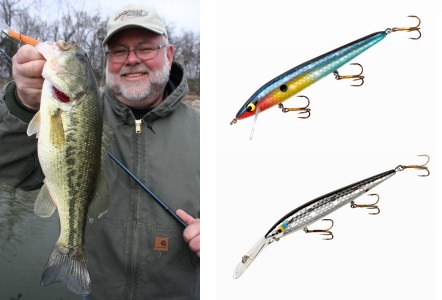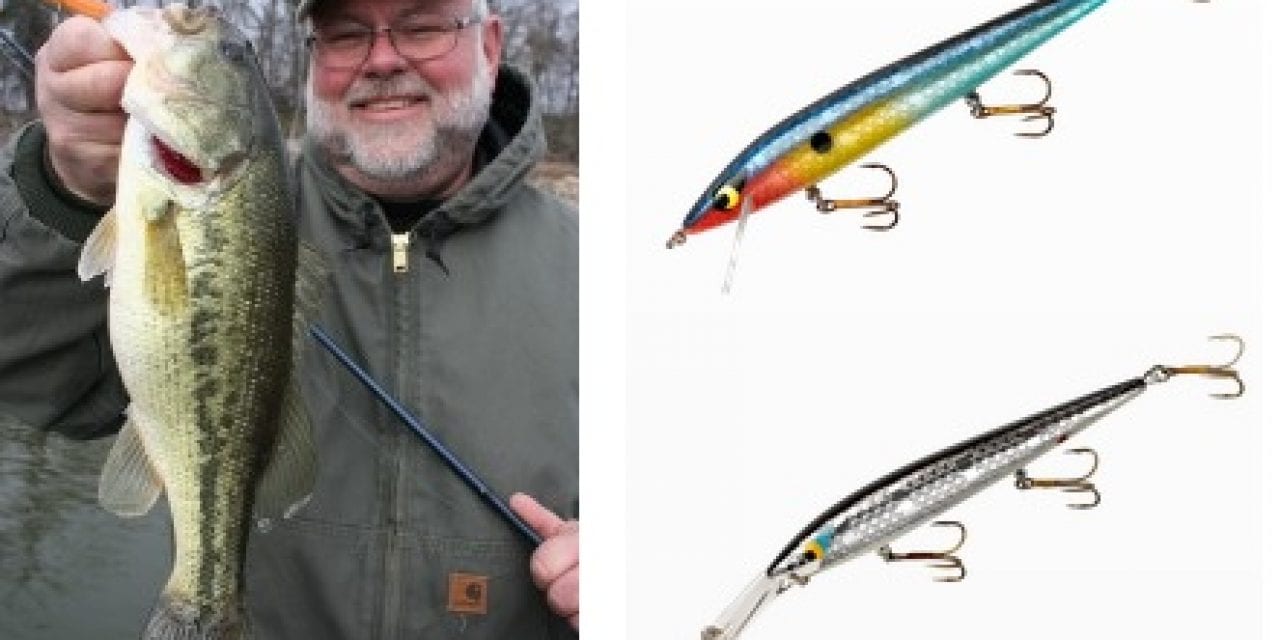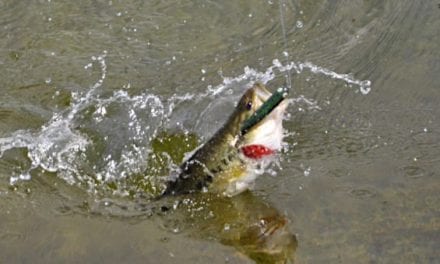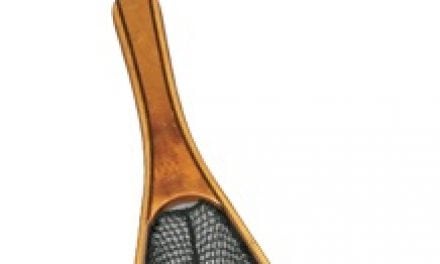 No other lure type is more effective in cold water than the hard-plastic suspending jerkbait. This dependable minnow-looking stickbait has bass-fishing fans across the country, but you need to know how, where and when to throw them. Visit Smithwick here – https://www.smithwicklures.com/product/
No other lure type is more effective in cold water than the hard-plastic suspending jerkbait. This dependable minnow-looking stickbait has bass-fishing fans across the country, but you need to know how, where and when to throw them. Visit Smithwick here – https://www.smithwicklures.com/product/
Some lakes are marked as “Rogue Lakes,” but anglers across the country know that this technique is the one to use when the water gets cold. Sure, the technique was made famous at Lake O’ The Ozarks and other clear-water highland lakes, but it works anywhere. Bass seem to go into a state of suspension and quit chasing fast-moving lures in cold water. One thing that triggers them, though, is a suspending jerkbait twitched and paused in front of their noses. It may occur in February on Lake of the Ozarks and May in Lake Erie, but it will happen everywhere bass swim.
Water temperature is the No. 1 indicator that it’s jerkbait time. Generally, Rogues and other jerkbaits are most effective when the water temperature drops below 55 degrees. It’s not that jerkbaits only work in cold water – they’ll catch bass any time there’s a relatively shallow bite – but in cold water, you will catch more and bigger bass on a jerkbait than on any other lure.
Bass don’t feed much when it’s cold, but the jerkbait doesn’t rely on feeding activity to catch fish – they rely on creating a reaction strike by presenting a slender minnow bait right on a fish’s nose, then twitching it away.
Jerkbaits are not like other lures – bass anglers rarely catch fish on them with a simple, steady retrieve. Instead, they rely on the angler to create the action with a series of twitches and pauses. The twitches prompt the lure to dart erratically then stop and suspend on the pause. Bass may simply inhale the lure while it’s motionless, but may also hover behind it and strike when the lure begins to dart away after a long pause – thus, a reaction strike.
The most effective speed or cadence often depends on water clarity and temperature. Normally, the pauses between pulls and twitches should be longer as the water temperatures get colder. Most anglers produce the action by twitching downward with the rod with just a little slack in the line. The cadence can be something like “twitch-twitch-pause, twitch-pause, twitch-twitch-pause.” Cast, crank the lure down to the right depth, then begin your cadence.
It’s up to the angler to determine the right cadence, duration of the pauses, and how aggressively to twitch the jerkbait. Recently in a major bass tournament on Beaver Lake in Arkansas, the winning angler used an aggressive series of jerks with short pauses to prompt reaction strikes from suspending bass, but a few years ago a Texas tournament was won by an angler letting the jerkbait suspend for long periods of time and then just barely twitching it. By paying attention to your cadence you can duplicate it once you get a strike.
Winter and early spring jerkbait hotspots on any body of water include the ends of bluffs, outside channel swings, around aquatic vegetation, boat docks, standing timber and other cover and structure. Bass prefer to move vertically in cold water, so deep water is important. On highland reservoirs, bluff ends are natural wintertime feeding areas for bass. They are easy to locate on a sonar/GPS unit or just by seeing them as you drive down the lake, but all are not created equally. The best will feature a drop-off on one or both sides, such as a creek channel running from a feeder creek on one side and the old river channel swinging in on the other.
Outside channel swings are tougher to find. Use your sonar/GPS unit mapping to find areas where the channel makes a hard curve, especially if it swings close to shore. Position the boat so you can make casts parallel to shore, then maneuver over the deeper water and cast shoreward. Many anglers make the mistake of positioning one cast length from shore, but they’re often sitting right over the fish. Make an effort to begin fishing about two-cast-lengths from shore and work your way in.
Fishing jerkbaits around aquatic vegetation can be challenging. Depending on the water depth, anglers may go to a floating jerkbait so it stays above the grass. Regardless of depth, pay close attention to channels and deeper ditches within the area. Bass use these ditches or creek channels to move into and out of the vegetation.
Boat docks are notorious for holding suspended bass during the winter months. It’s even better if the dock has brushpiles under it for bass and forage fish to hide in. Look for subtle signs of crappie fishermen – rod holders, floating minnow buckets and such – for indications of brush under the dock. Bass may hold under the floatation on the shady side or suspend just underneath the sunny side to soak up the warmer water.
Standing timber can also produce big jerkbait bass during the winter months. The best standing timber is often found on bluff ends or along bluff banks near the old river channel on highland reservoirs, which brings up a good point — it’s important to look for combinations of fish-holding areas – standing timber in a channel swing, a bluff end with a rocky drop-off on one side, a dock with a big crappie brushpile underneath, or a creek channel in aquatic vegetation. It’s often at these “intersections” where two types of cover meet that bass choose to hold.
For many years the most popular color patterns in Rogues have been chrome/blue (or black) back, clown, and subtle variations on this reflective baitfish-look theme. Color does matter, however. In general, when fishing gin clear water think more natural colors, while bright colors often get better results in stained water. Some of these “Ozark Rogue Lakes” seem to have developed favorite color patterns, such as Purple Darter on Table Rock Lake. Translucent colors are perfect for super-clear water.
Three of the most well-known “Rogue Lakes” are located on the White River Chain of Lakes — Beaver Lake, Table Rock and Bull Shoals, but “jerkbait time” is well documented across the country. They catch largemouth at Falcon as well as smallmouth in a Canadian natural lake. Anywhere smallmouth or largemouth bass get sluggish and suspend is a good place to throw one.
The post Rogue Hotspots for Bass appeared first on .
















